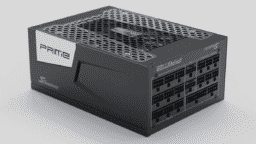Laptops have become an everyday tool for students, professionals, and families. If you’re tired of being stuck at a desk or frustrated by your desktop computer’s limits, you are not alone. Many people want to work remotely, create presentations on the go, or play games anywhere they like.
One big fact stands out: Laptops offer both freedom and headaches. For every perk of a portable computer, there’s often a downside.
This guide covers the top 10 advantages and disadvantages of laptops in plain words. You’ll learn how a laptop stacks up against its own pros and cons and discover which features matter most for your needs.
Curious if that new rig fits your lifestyle? Smart research and careful comparisons back these insights. Keep reading!
What is a Laptop?

A laptop is a portable computer that holds the same essential hardware as desktop computers. British designer Adam Osborne invented its first commercially successful version in 1981. Every laptop fuses its key parts into one unit: a screen, keyboard, touchpad, built-in speakers, microphone, camera, and battery.
Popular operating systems such as Windows or macOS power these machines, which also boot quickly from solid-state drives (SSDs). Many newest models include powerful CPUs and graphics cards to support tasks such as video editing. Users can plug their devices into AC adapters to charge their batteries so they can use them during travel without connecting to external power sources.
Battery life usually ranges between four to twelve hours, depending on the task load and your laptop model. The thin design of laptops reduces clutter compared with bulky desktop computers.
Top 10 Advantages of Laptops

Laptops pack a punch with clever features that simplify daily tasks. They mix style, speed, and smart tech to suit diverse needs at home or on the move. The following points clarify why many choose these portable computers.
1. Lightweight and Portable
Many laptops are feather-light; some weigh as little as two pounds. You can stow a laptop into any backpack.
Students jet between classes using notebooks without breaking a sweat or straining their backs. Frequent flyers breeze through airports since slim laptops slide right under the tray tables on planes. Remote workers power up video conferencing in parks, cafes, and even airplanes. Graphic designers and freelancers pull out laptops anywhere they find an internet connection and keep projects rolling from sunrise to sunset.
Lightweight design lets gadget lovers swap offices for coffee shops in seconds; freedom to work from almost anywhere becomes a reality, not wishful thinking.
2. Space-Saving Design
No bulky tower or tangled wires choke your workspace. A compact computer fits nicely on small tables or shelves. Compact design means you skip the mess of giant towers, heat sinks, motherboards, speakers, UPS, and large external monitors.
Perfect for tiny bedrooms, dorms, studios, and even RVs. Clutter shrinks to near zero since wireless connectivity and all-in-one features keep wires out of sight.
3. All-in-One Compact Design
A laptop’s all-in-one compact design puts the keyboard, screen, and touchpad right at your fingertips. Integrated devices mean you can skip buying extra peripherals like a mouse or an external monitor.
Many users enjoy switching between laptops and convertible models that act as both tablets and computers without needing docking stations. The built-in approach keeps everything neat and clean.
4. Battery-Powered Independence and Energy Efficiency
Modern laptops deliver up to 12 hours of battery life per charge. Students and remote workers can continue tasks without scurrying for an outlet. New laptop models with modern processors use power-saving tech, reducing energy consumption down to only 20 to 50 watts.
Hibernation mode of your laptop saves both battery and your progress, so nothing gets lost if the juice runs dry before you plug back in.
5. Quick Setup and Easy to Use
Laptops bring true plug-and-play convenience straight out of the box. Minimal assembly required means you skip long instruction guides and tricky installation steps. Flip open your device, press the power button, and let it run on its built-in battery without hunting for a wall socket first.
User-friendly interfaces guide you through setup screens in minutes rather than hours. Whether you use a touchscreen laptop or a convertible one, or even a budget-friendly option, expect fast results with little fuss.

6. Affordable Options for Every Budget
Many models strike a balance between cost and capability. Brands like Acer, Dell, and Lenovo stand out with many of their models for budget-minded users running Windows. Chromebooks, priced under $500, support basic tasks such as web browsing and streaming. Even convertible laptops deliver touchscreen features without breaking the bank.
Affordable choices mean everyone from students to graphic designers finds something that fits both their needs and budget limits.
7. Enhanced Connectivity Options
Built-in Wi-Fi and Bluetooth take the hassle out of hooking up to networks and devices. Laptops connect wirelessly to printers, smartphones, or headphones with just a few clicks. Built-in webcams and microphones make video calls simple. No extra gadgets needed for online meetings or collaborating with your team.
Mobile hotspot features let you share your laptop’s internet connection when other devices need it most. Tethering turns your computer into an internet hub wherever you go, perfect for travel or remote work.
8. Strong Software Compatibility
Windows laptops handle a vast number of applications right out of the box. Casual gamers, graphic designers, and vloggers can run heavy-duty software like Adobe Photoshop or Steam with ease. Microsoft Office works without hiccups for office work on most machines.
Chromebooks come ready for basic tasks like web browsing, note-taking, and Google Workspace apps, but hit a wall with other high-end software. Convertible laptops running Windows hold an edge in this area because they support both modern touchscreen apps and full legacy software at once. This high level of compatibility keeps your workflow smooth all the time.
9. Versatile Performance Capabilities
High-end gaming laptops today run high-end games thanks to strong processing power and graphics cards. Creators love these machines for video editing and design because they handle apps like Adobe Premiere Pro with ease.
Many business pros use compact devices with docking stations at the office, then unplug for travel. Graphic designers choose touchscreen laptops with stylus support to sketch or edit on the go.
Students often pick models that balance battery life, wireless connectivity options like Wi-Fi and Bluetooth, plus fast setup for daily tasks. Convertible laptops switch from work mode to tablet fun in seconds. Families stream movies, play online games, and tackle homework all on one device without missing a beat.
10. Stylish and Modern Designs
Sleek laptops turn heads in coffee shops and workspaces. Many models come in eye-catching shades like silver, black, or bold blue finishes. Convertible laptops can switch between tablet and computer with a simple motion, offering extra flexibility for creative tasks or video editing. Improved ergonomics increase comfort during long working sessions or design projects.
Top 10 Drawbacks of Laptops

Laptops offer great benefits, but they also come with some limitations. Even the savviest user finds challenges. The following points highlight potential issues.
1. Limited Upgrade Possibilities
Changing parts in a laptop often feels like solving a puzzle with pieces missing. Typically, only memory and hard drives are accessible. Upgrading CPUs or graphics is nearly impossible since key components are soldered in place. Proprietary screws and unique layouts further restrict modifications.
2. Performance Limitations
Miniaturized parts help keep laptops light but often leave them trailing in processing power. Graphic designers working on detailed projects may notice slower rendering times or even lag during peak loads. Models without liquid cooling can overheat under pressure, forcing the system to slow down to lower temperatures – a problem known as thermal throttling.
Gaming laptops try to close the gap with upgraded hardware, yet they still face hurdles due to size and energy limits. Heavy apps might stutter or crash if you push them too hard for long periods.
Laptops must balance battery life against power consumption, limiting what their hardware can do. Docking stations add some juice but rarely fix core performance gaps in raw computing muscle.
3. Higher Cost Per Performance
Packing a lot of power into slim laptops drives prices up. Building smaller battery packs, graphics chips, and processors costs more than using regular desktop parts. For example, gaming laptops with strong processing power often cost hundreds more than desktop computers with similar specs. Apple’s MacBook Pro or high-end machines for video editing highlight this price gap.
Portability comes at a premium because making everything fit in a thin space isn’t cheap. Graphic designers and gamers pay more per frame compared to desktops built for the same tasks.
Laptops sip less power but still have higher upfront costs due to their miniaturized design and advanced manufacturing steps.
4. Overheating Issues
Laptops tend to trap heat because of their tight design. Using a device on a soft surface may block vents and cause the temperature to spike. Intensive tasks like video editing or gaming can push the system into thermal throttling.
Over time, high heat levels hurt battery life and cut down component longevity. Gaming laptops with powerful graphics cards tend to get hotter than regular models. Laptops need good ventilation or a cooling pad to keep cool when stressed by tough tasks.
5. Shorter Lifespan
A typical laptop faces a shorter lifespan of about three to five years with heavy use. Frequent travel bumps around hinges, latches, and cases. Drops or rough handling may damage the screen or keyboard faster than you expect.
Heavy-duty tasks like video editing or gaming can heat up internal components fast; this slowly cooks the hardware inside. Dust in fans adds to overheating problems even for premium gaming laptops. Daily battery charging cycles wear down battery life quickly, especially if you skip proper care.

6. Ergonomic Challenges
Laptops limit your ability to customize your posture easily. It tempts users to hunch over cramped keyboards, which strains necks, backs, and wrists. Many struggle with poor posture since most designs keep screens low while hands work high, boosting discomfort after long stretches.
Small displays force closer viewing, which can tire your eyes quickly. Shortcuts from built-in touchpads might seem nifty, but they cause repetitive stress injuries over time.
Without extra stands or split keyboards, even high-end models ignore comfort in favor of style and portability. The fight for good posture is real; your body feels every shortcut that makes setup quick but ignores ergonomics.
7. Higher Repair Costs
Laptop repairs drain wallets quicker than you might expect. Laptops cram all vital hardware into a tight frame; if your battery dies or the screen cracks, replacements often cost a pretty penny.
Many makers use custom parts, so finding affordable spares becomes tough. This limited customization leads to higher maintenance bills.
Gaming laptops and models built for video editing can rack up even steeper repair costs due to powerful graphics cards or specialized cooling systems inside. Fixing these complex devices usually requires professional servicing.
Techs may have to replace entire boards just for one small issue, like faulty processing power chips or damaged connectors. Simple fixes rarely exist with modern laptops; skilled hands and special tools are the norm here, not the exception.
8. Risk of Theft or Damage
Carrying a laptop invites the risk of theft and accidental damage. Thieves target portable gadgets since they are easy to swipe and hide. Bumps, drops, and spills can wreck your battery life or destroy sensitive data in seconds.
Forgetting your gadget at a friend’s house is one thing – leaving it on a train means you might never see it again. Without proper password protection and encryption tools, sensitive information could end up in the wrong hands faster than you can think.
9. Battery Life Limitations
Running out of battery during a video call or gaming session can feel like hitting a brick wall. Most laptops need recharging every four to eight hours, which interrupts busy days.
Heavy users often plug in more than twice daily. Over time, frequent charging and poor habits degrade battery life further. By year two or three, many batteries hold less charge than when new.
Power-saving modes may cut processing power on battery use, slowing tasks that demand high performance. Gaming laptops drain their batteries even faster with powerful GPUs and screens gobbling up energy quickly.
If you need a replacement lithium-ion cell from reputable brands today, expect costs to range between $60 and $150, depending on your laptop model. Battery life degradation remains one of the most common frustrations for those who depend on laptops for work or play.
10. Limited Ports
Many laptops come with only a handful of USB sockets, one HDMI slot, if you are lucky, and sometimes no Ethernet connector at all. Newer models might restrict connections to USB-C, complicating the use of older peripherals.
If you care about using multiple screens or adding custom hardware later on, limited options for customizing hardware configurations after purchase make things trickier.
Managing your battery life becomes tough if you use dongles that draw power from the system all day. This puts the brakes on flexibility for anyone wanting to juggle more than just basic gadgets and displays.
Who Benefits Most from Laptops

- Students use laptops for online classes, homework, and note-taking. Fast battery life keeps them mobile throughout the day.
- Business professionals manage presentations and join video meetings on the go. The compact design fits well in busy offices.
- Frequent travelers work comfortably in airports, coffee shops, or on trains. Portability and wireless connectivity make a big difference.
- Casual users watch movies, check emails, and browse the web from anywhere. Efficient power consumption helps keep operating costs low.
- Graphic designers sketch ideas directly on screens and run software like Adobe Illustrator with ease.
- Freelancers write reports, edit images, and handle invoices from one steady device. Consistent performance smooths their workflow.
- Note-takers organize daily plans using digital apps that enhance productivity.
- Casual gamers and gaming enthusiasts enjoy decent performance for multiplayer sessions and can move their setup between locations.
- Remote workers benefit from a quick setup and light weight. Built-in webcams support virtual meetings effectively.
- Teachers create lesson plans and grade assignments swiftly using efficient portable tools.
Who Should Avoid Laptops

- Hardcore gamers demanding top performance and advanced graphics may notice that gaming laptops struggle with intense frame rates and cooling.
- Professional video editors handling 4K or 8K footage require sustained processing power that can be hindered by overheating and limited upgrade paths.
- Programmers running several virtual machines and heavy compilers can experience slowdowns due to limited ports and expansion options.
- Engineers using CAD software or designers working in VR might need customizable setups; fixed components restrict upgrades.
- Those prone to repetitive strain injuries suffer from flat keyboards and cramped touchpads during long hours.
- Users who need continuous, high-level performance may find battery-dependent devices limiting compared with stationary setups.
- Individuals worried about repair expenses could face steep costs if screens or motherboards fail, unlike many desktop computers.
- Users who wish to plug multiple external components and peripherals might struggle with a lack of sufficient USB ports for multiple connections.
- Security-conscious users may fear data loss because portable devices are easier to misplace or have stolen.
- People who experience physical discomfort from prolonged use often find that laptop computers allow fewer ergonomic adjustments.
Conclusion

Picking a laptop is a bit like choosing shoes for a long trip. Every feature matters, from portability and battery power to cost and ports. The balance between strengths and limitations shapes how well it fits your daily routine or working sessions.
This comparison lays out the pros and cons of laptops so that you can make an informed choice. Ask yourself what you need most: speed, ease of use, price tag, or style? Take time; smart choices save money and headaches down the road.






